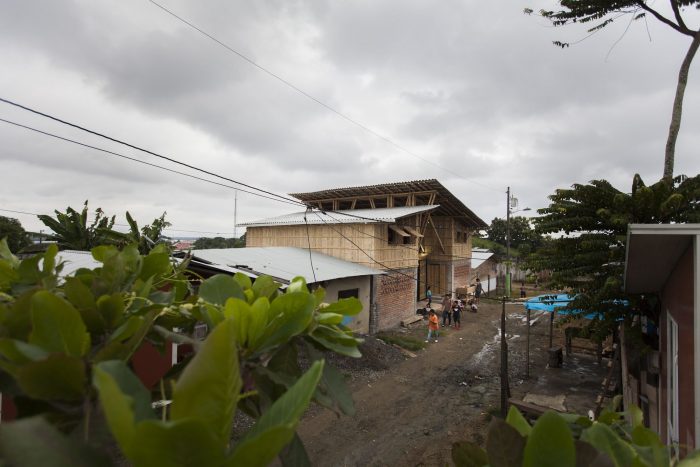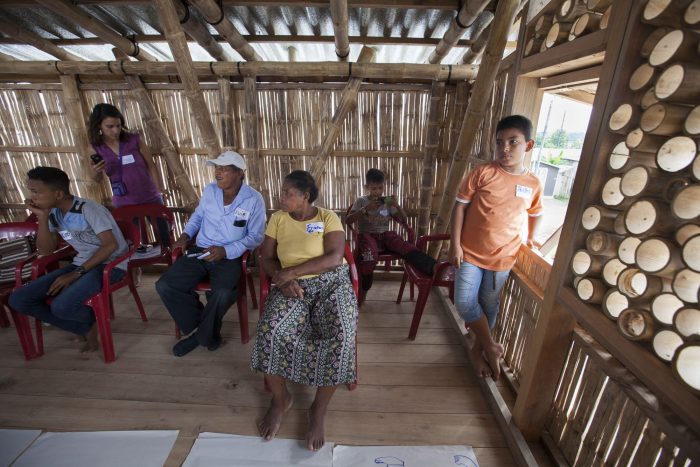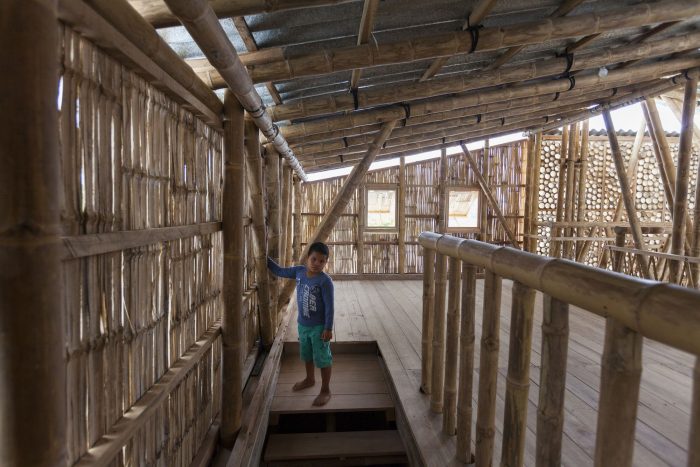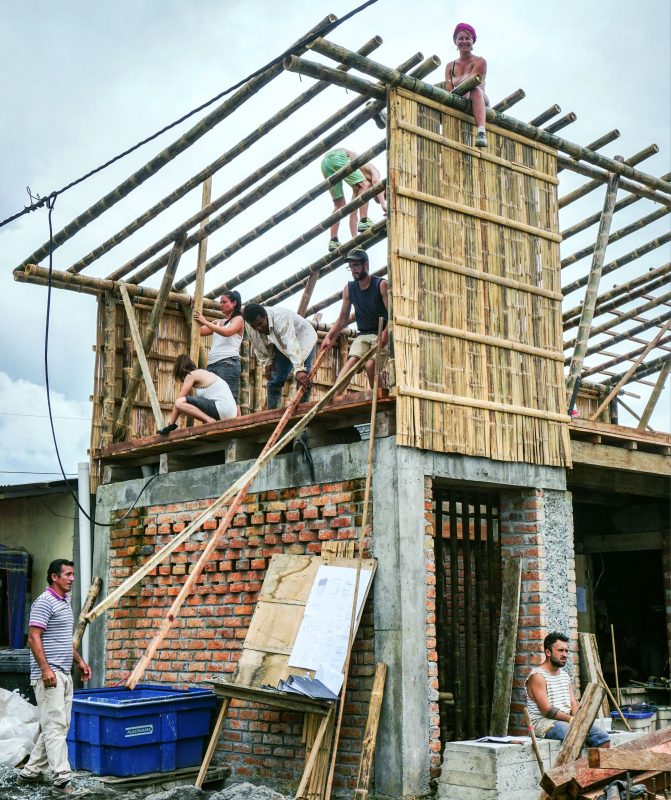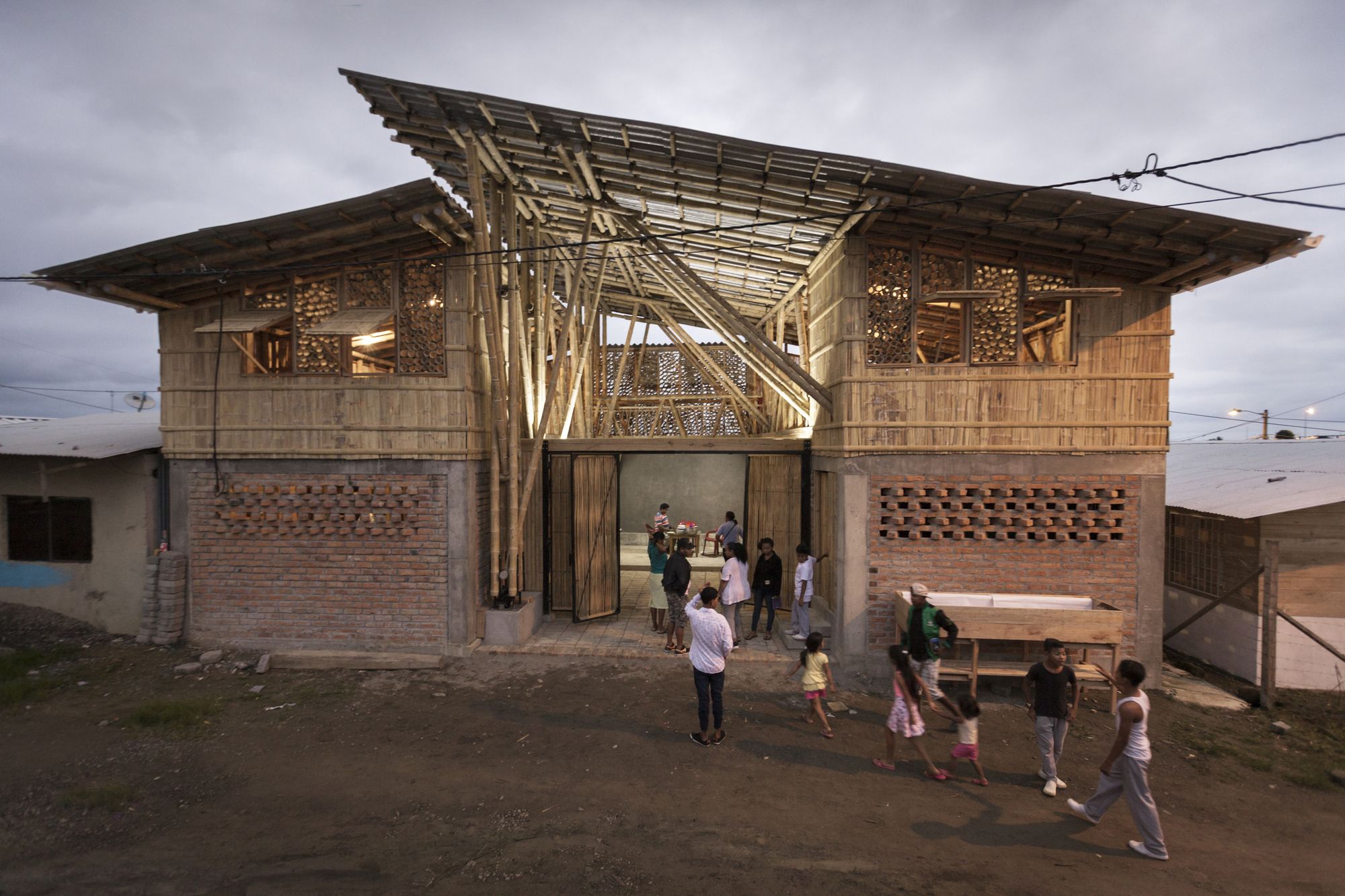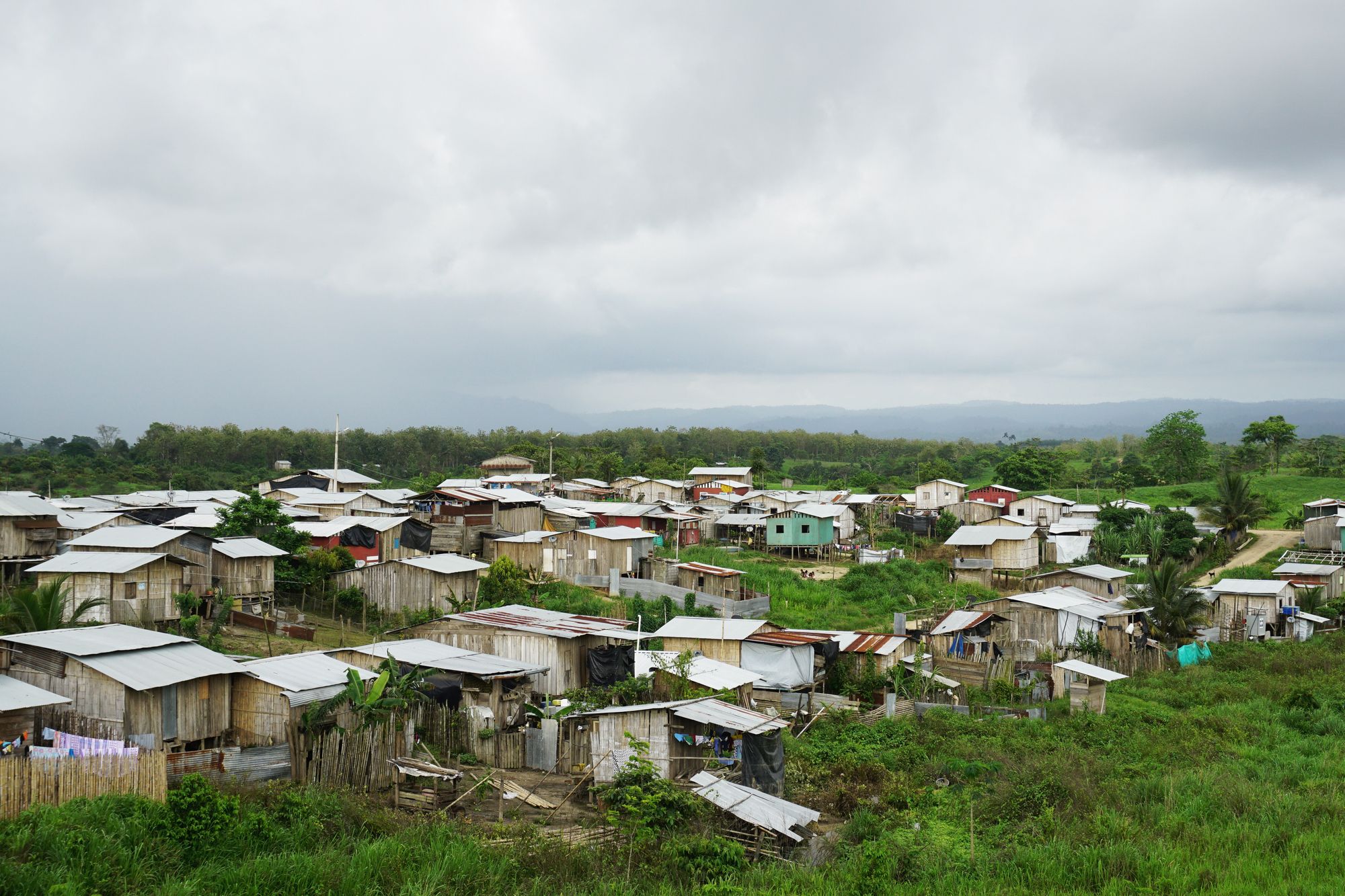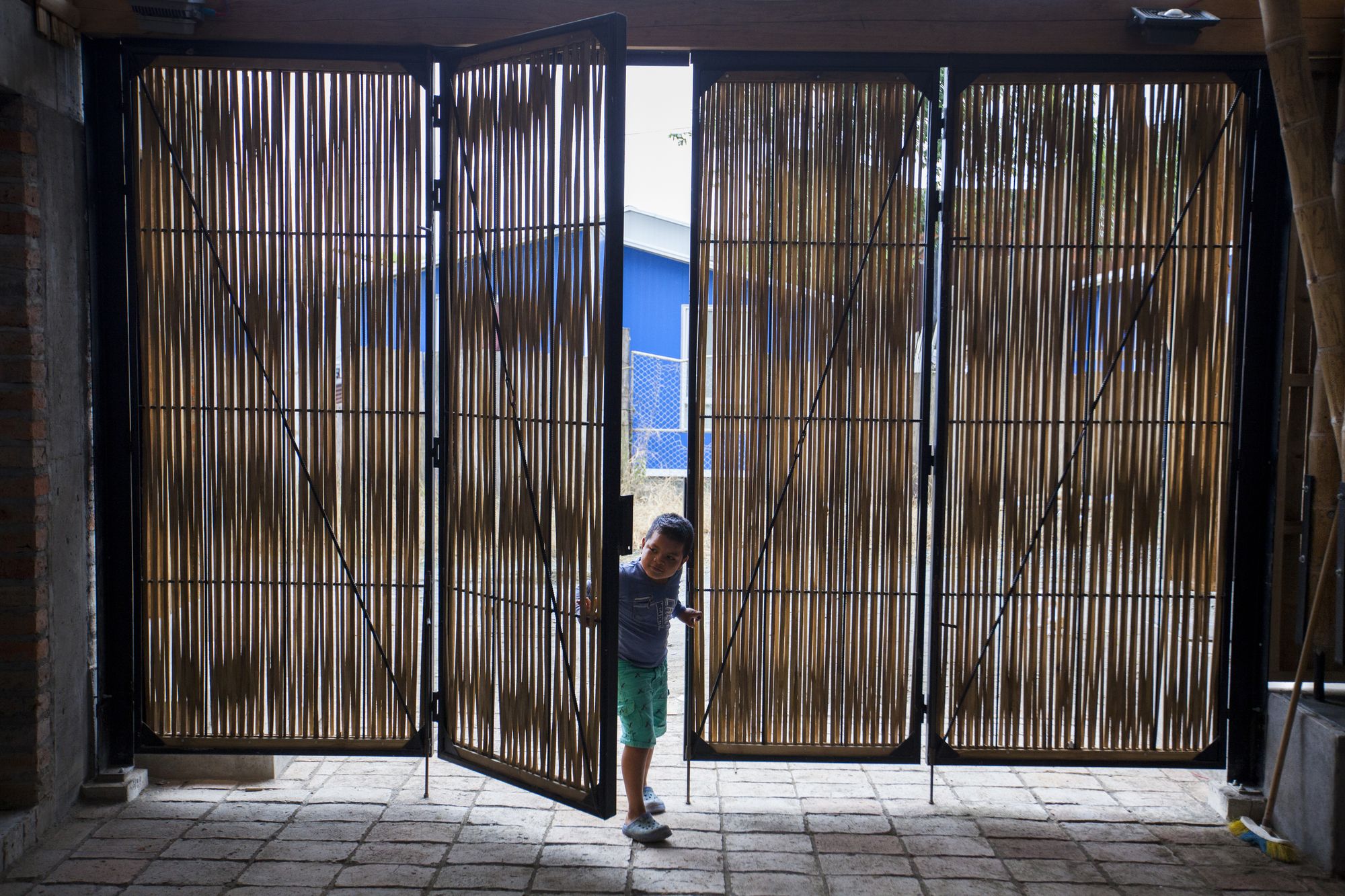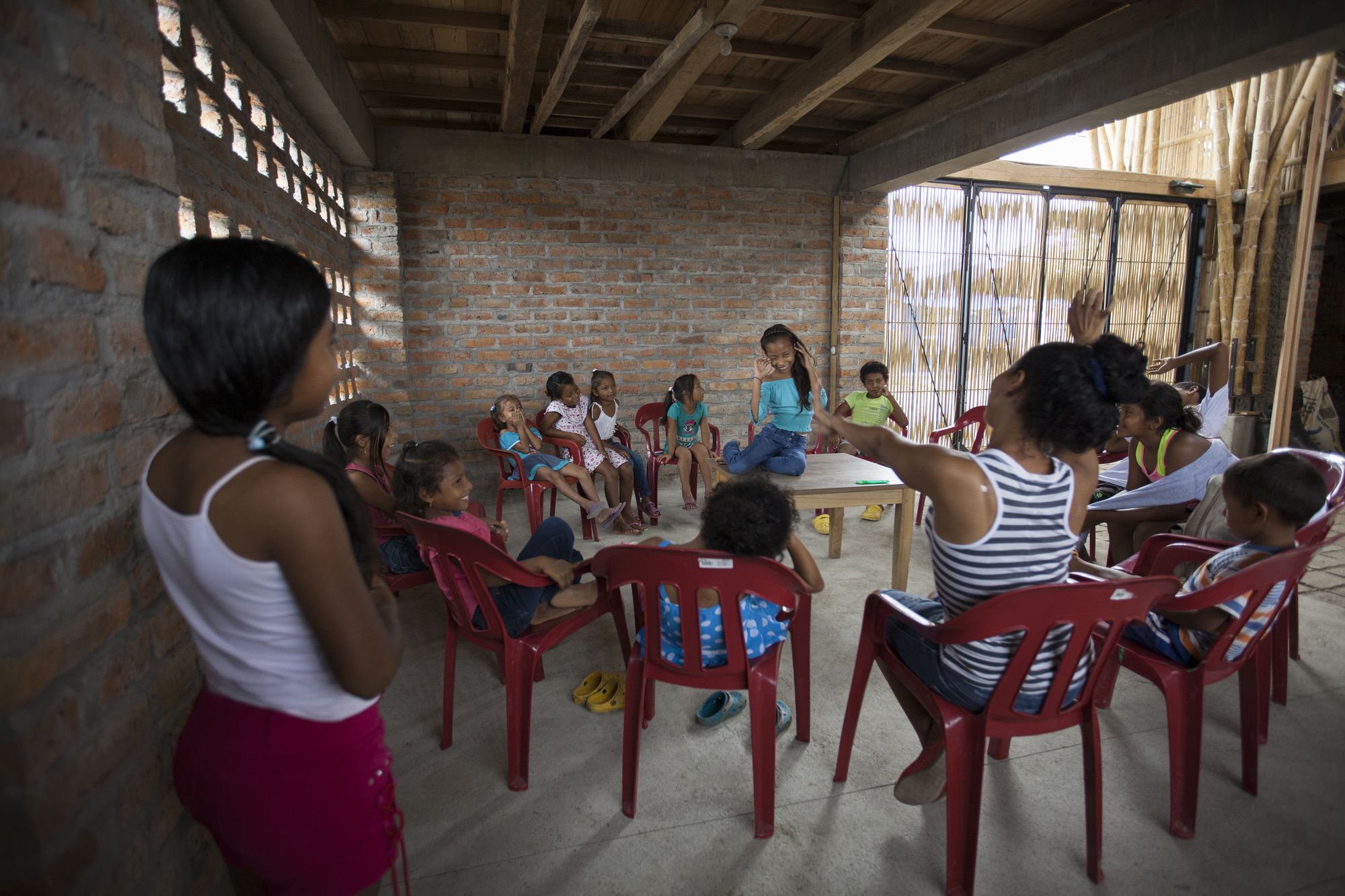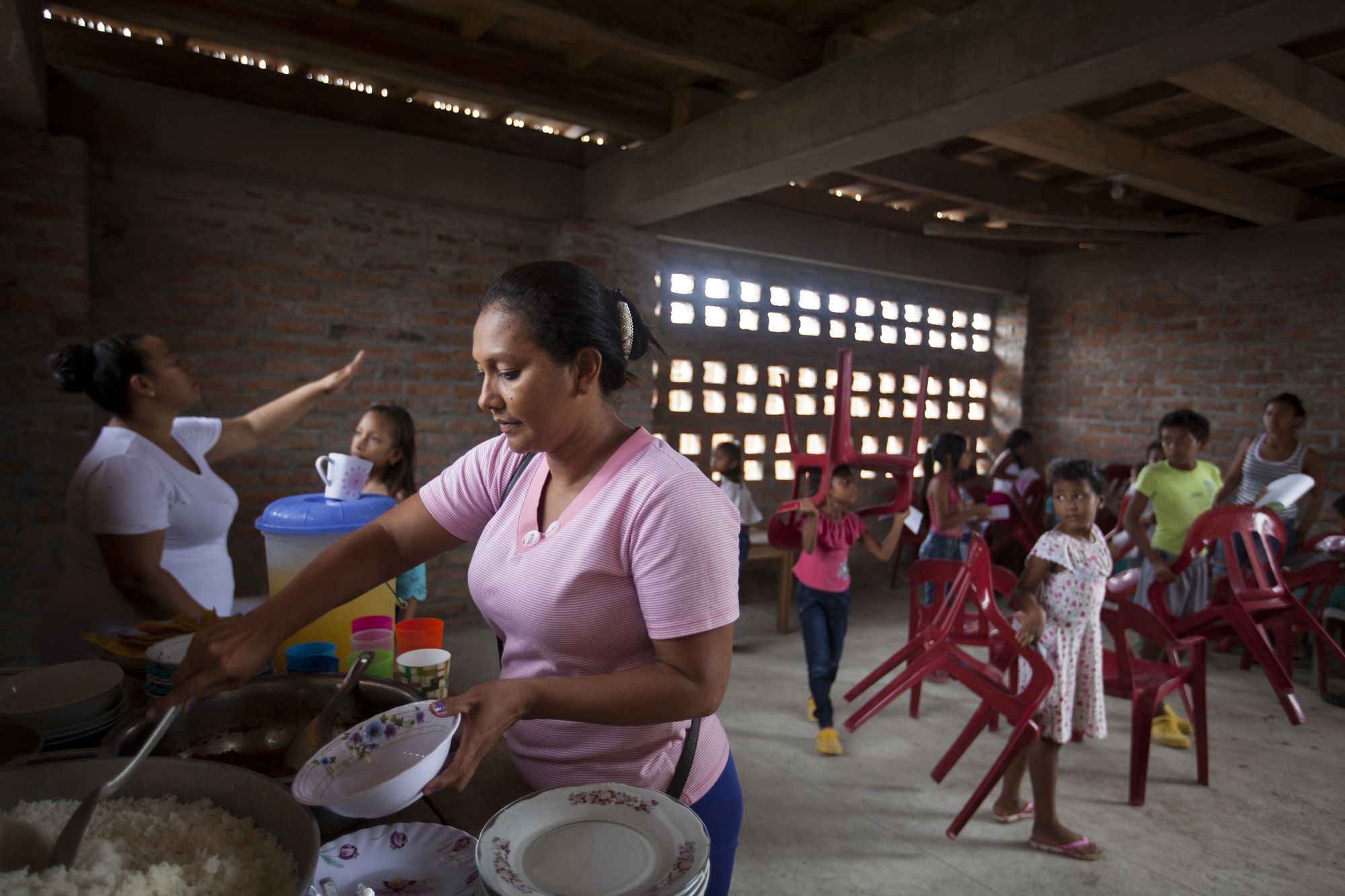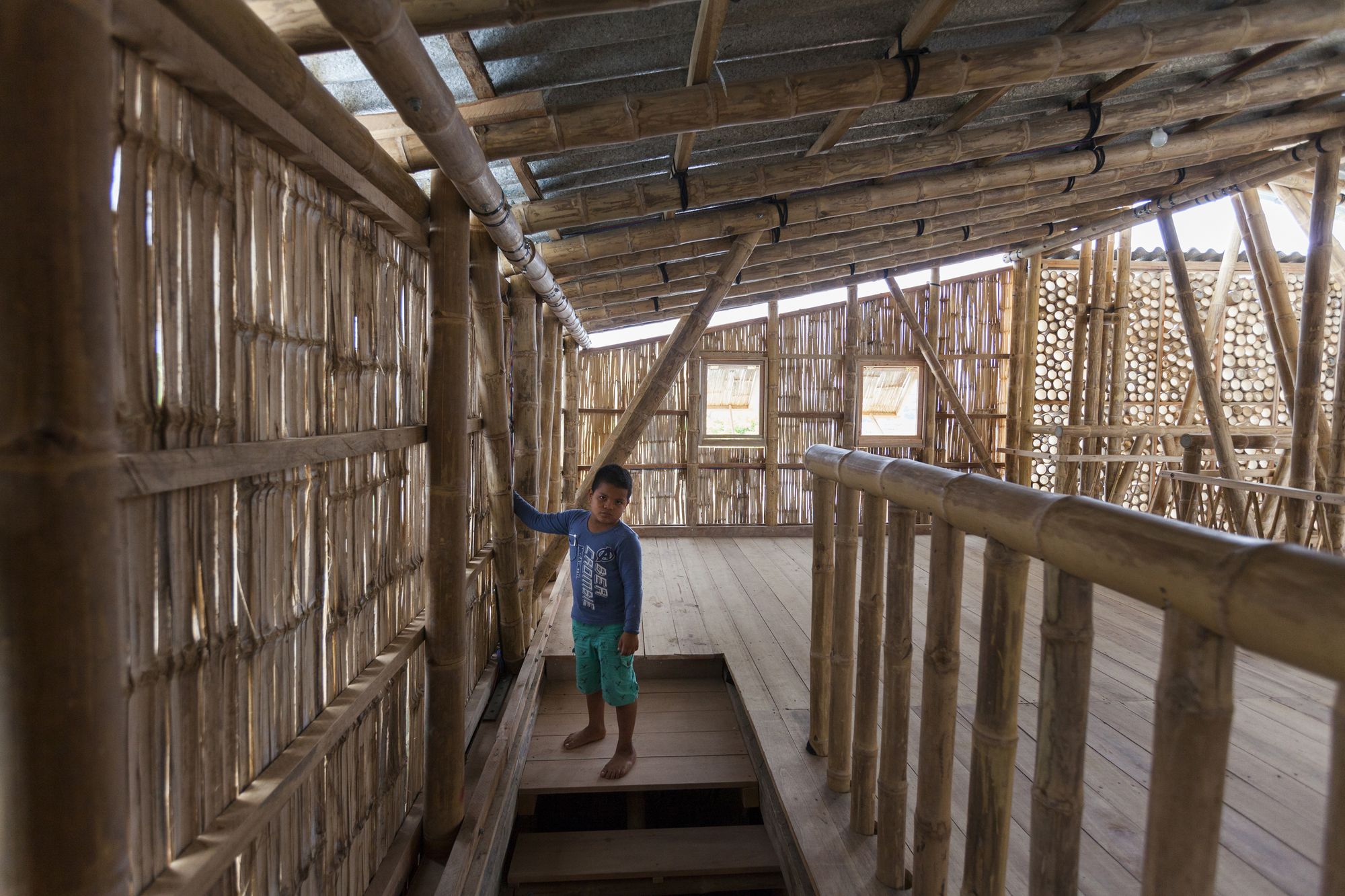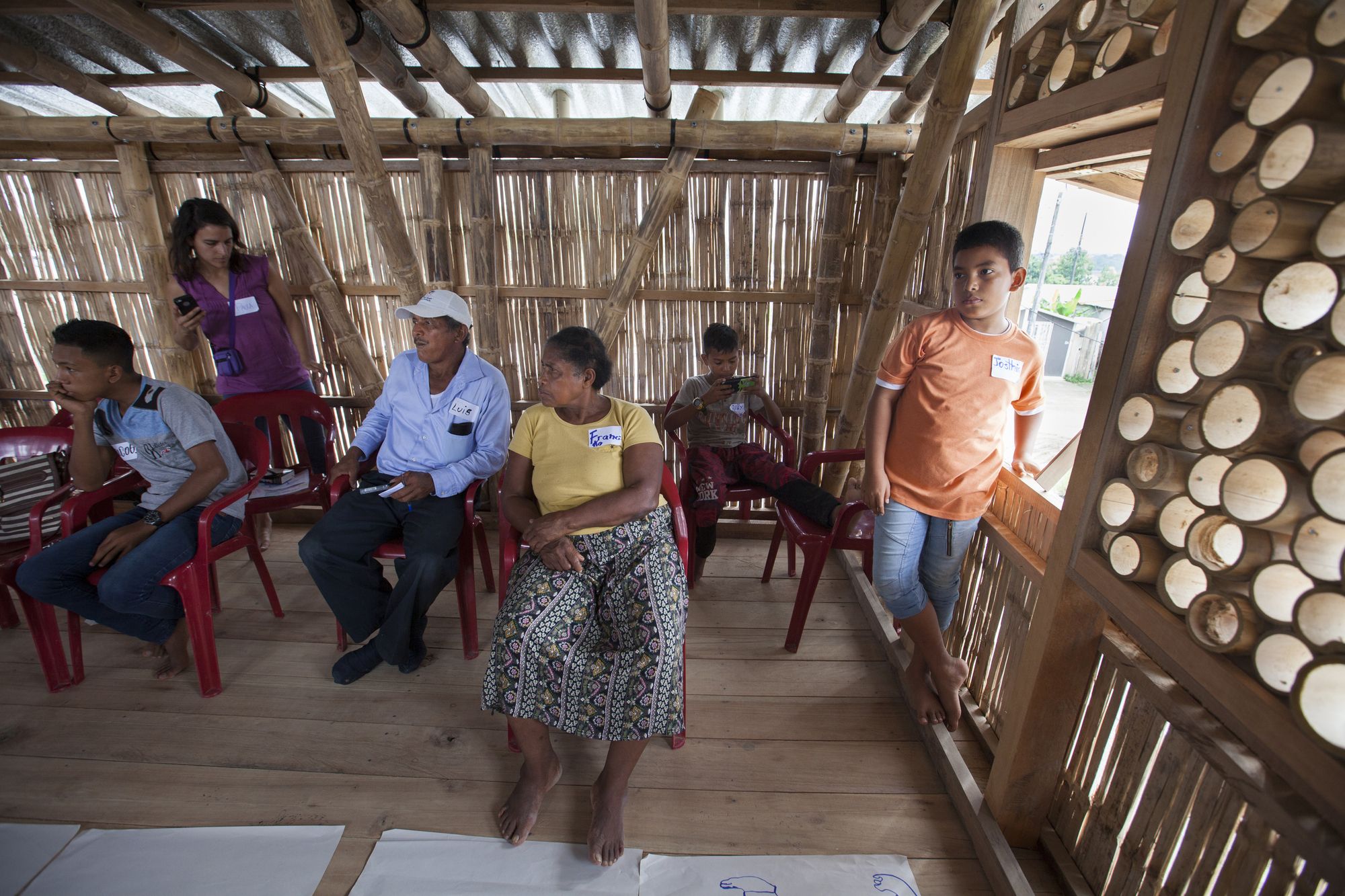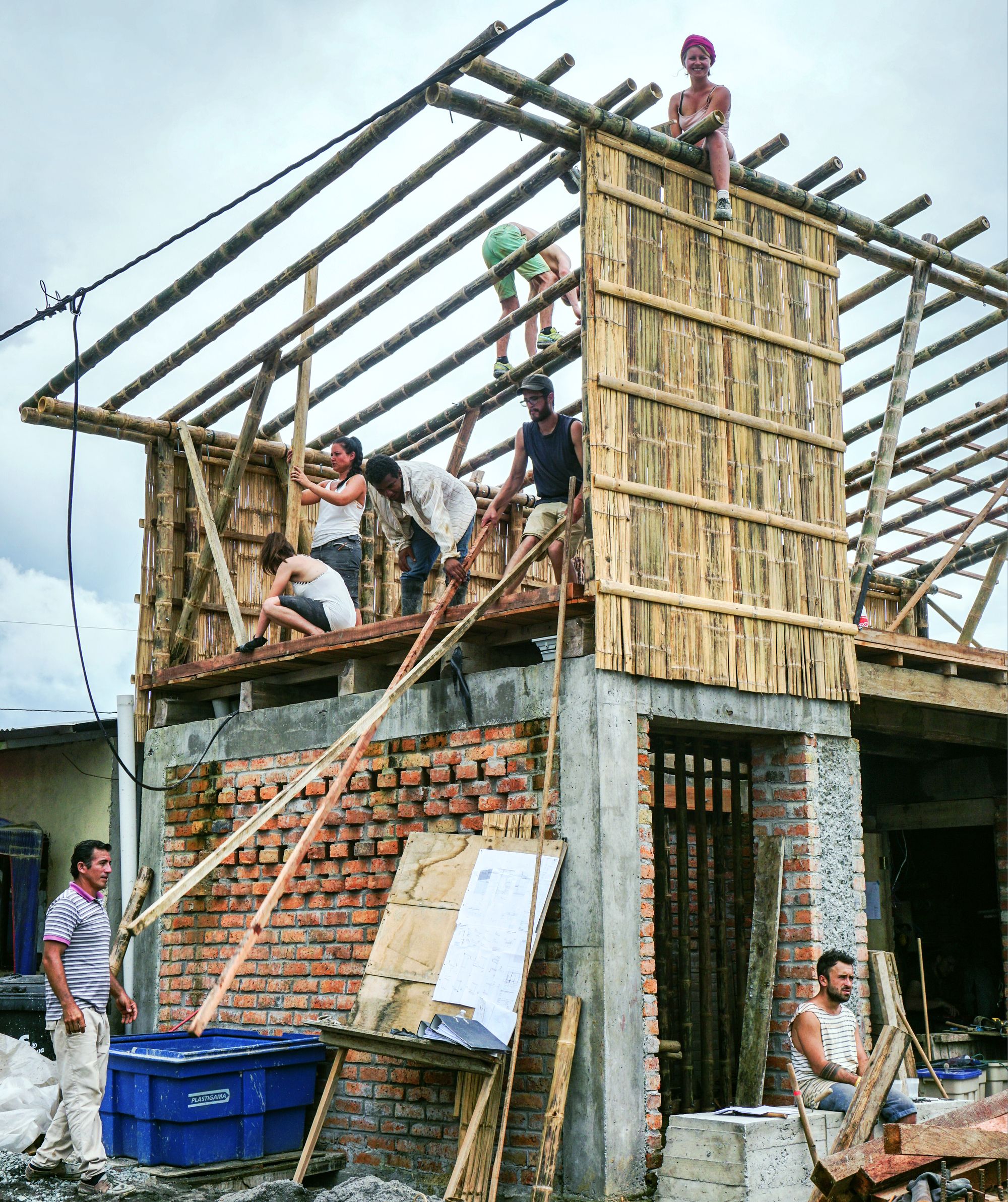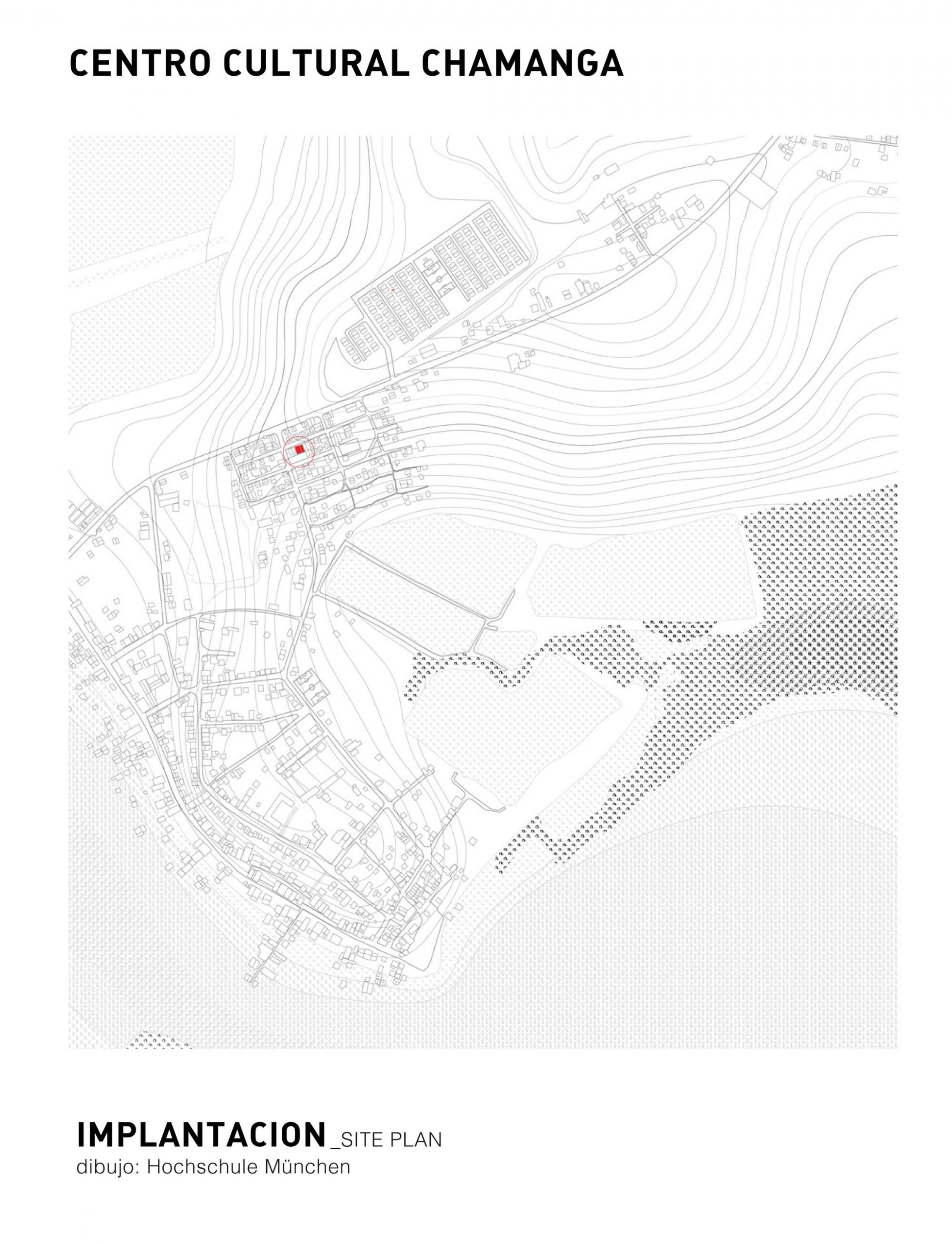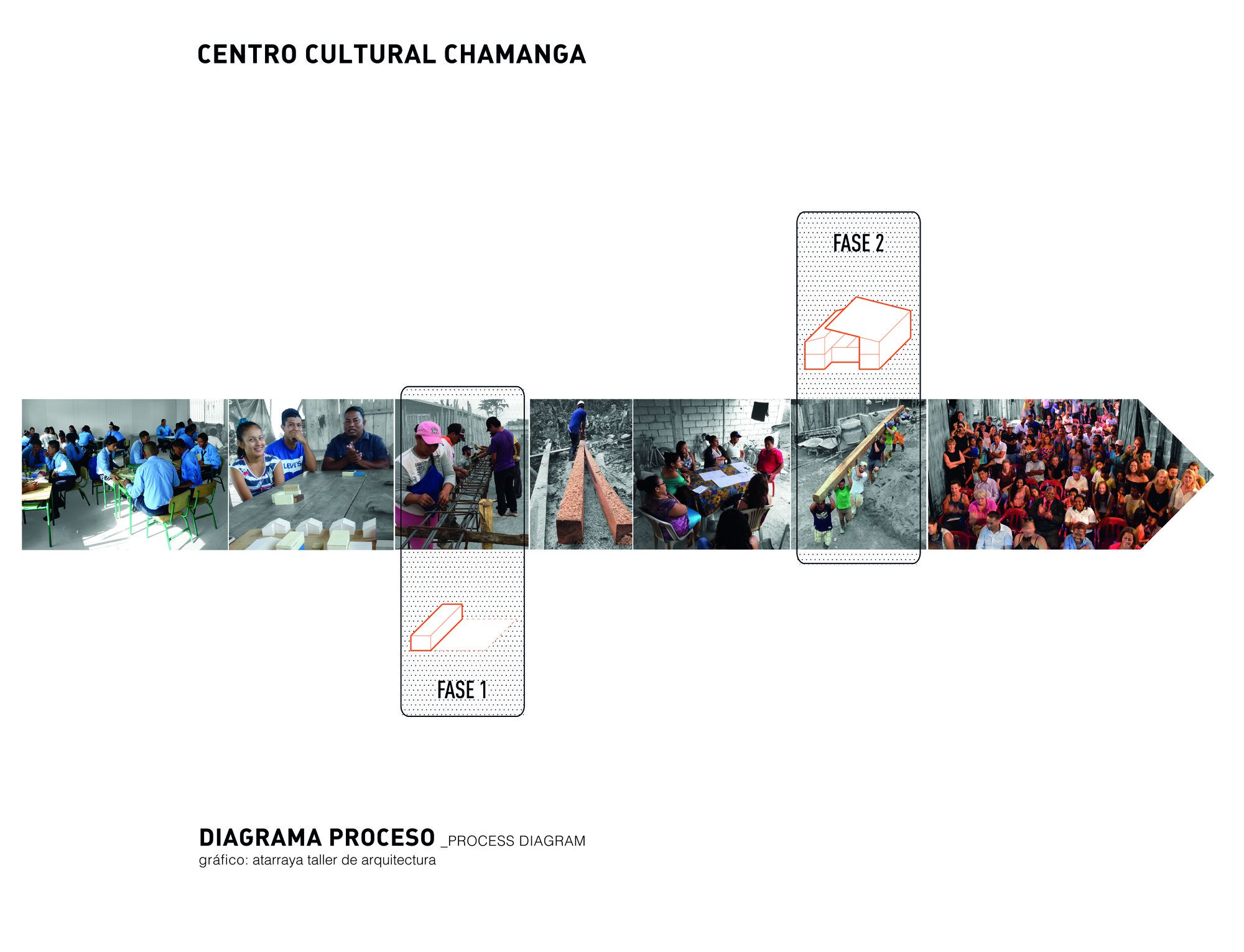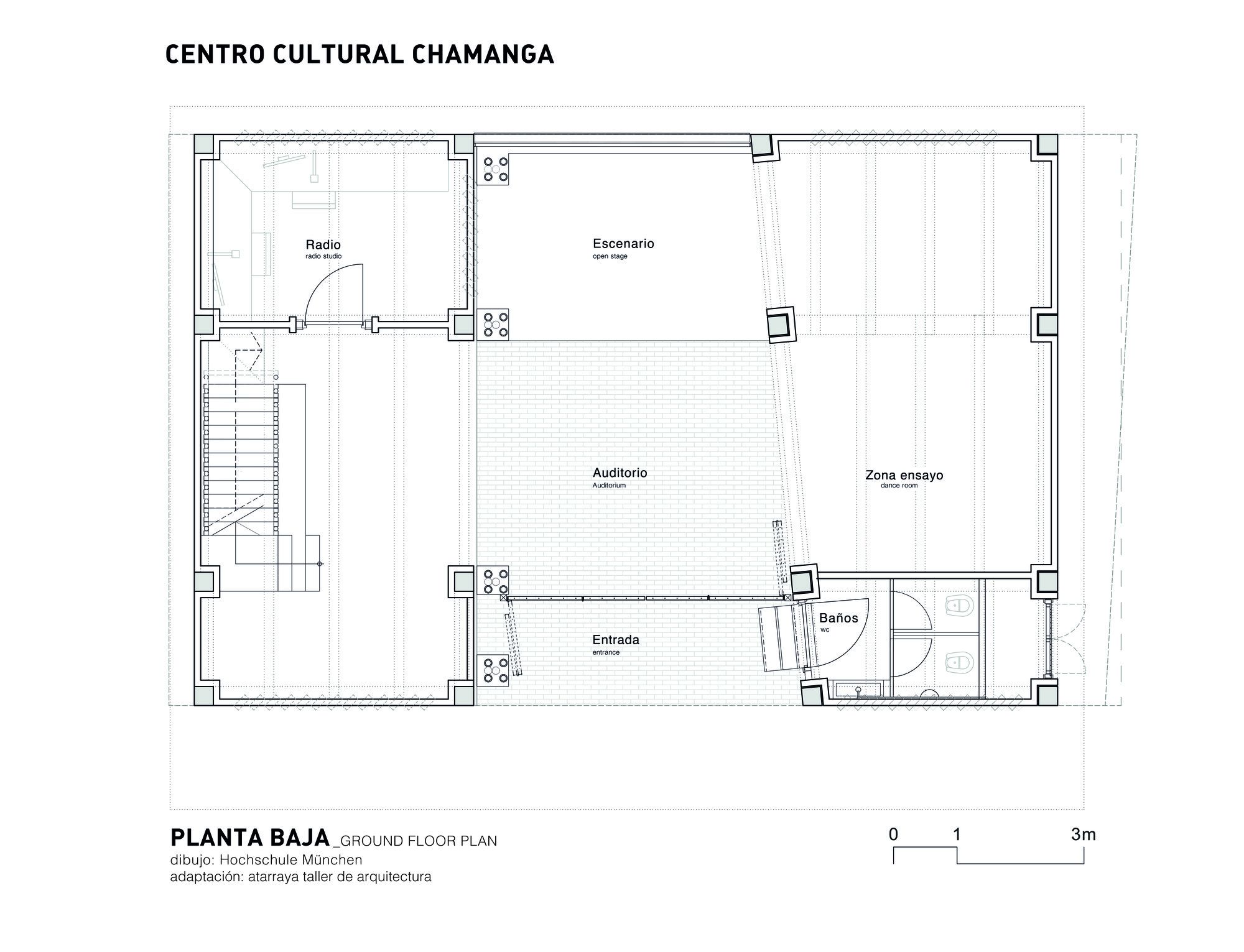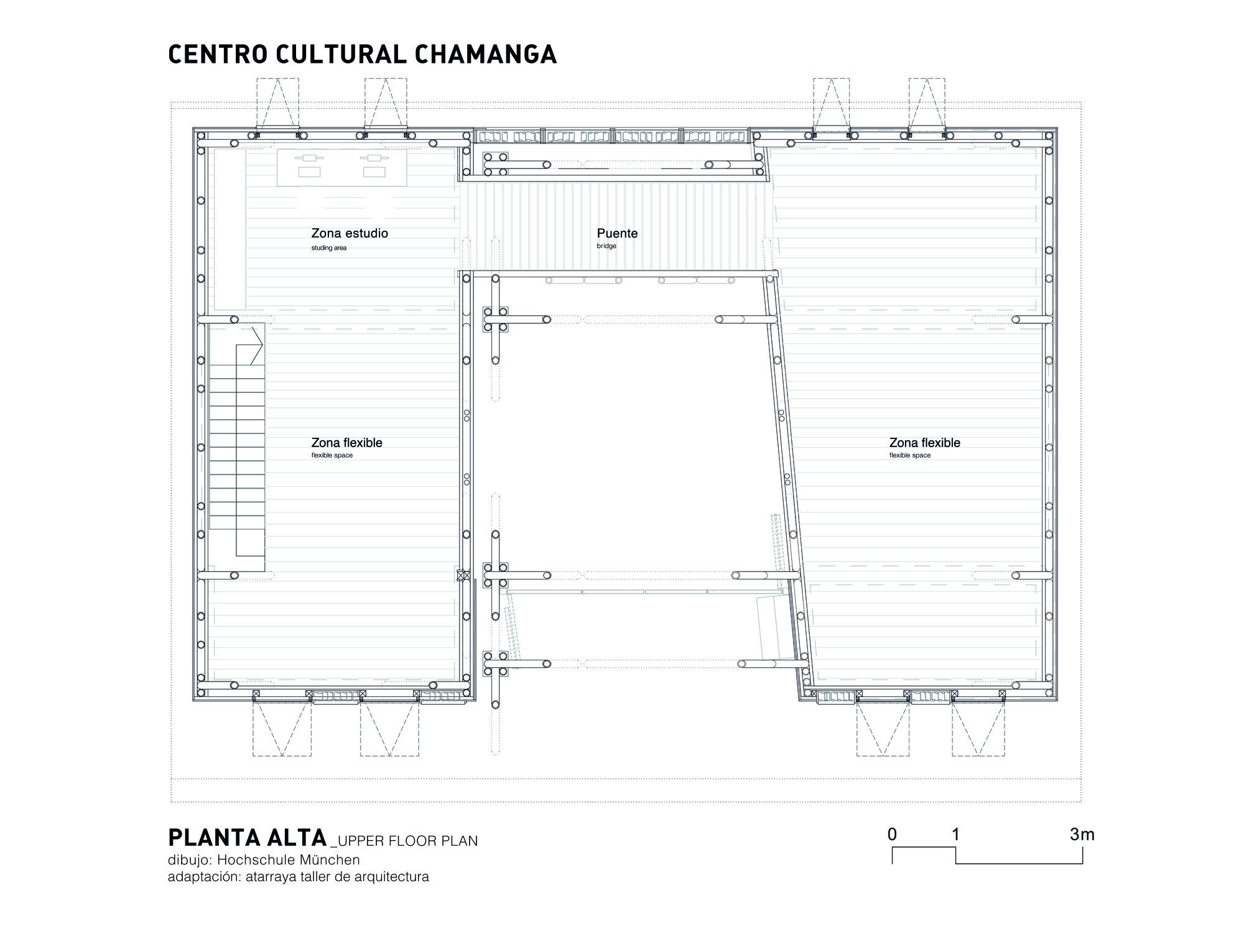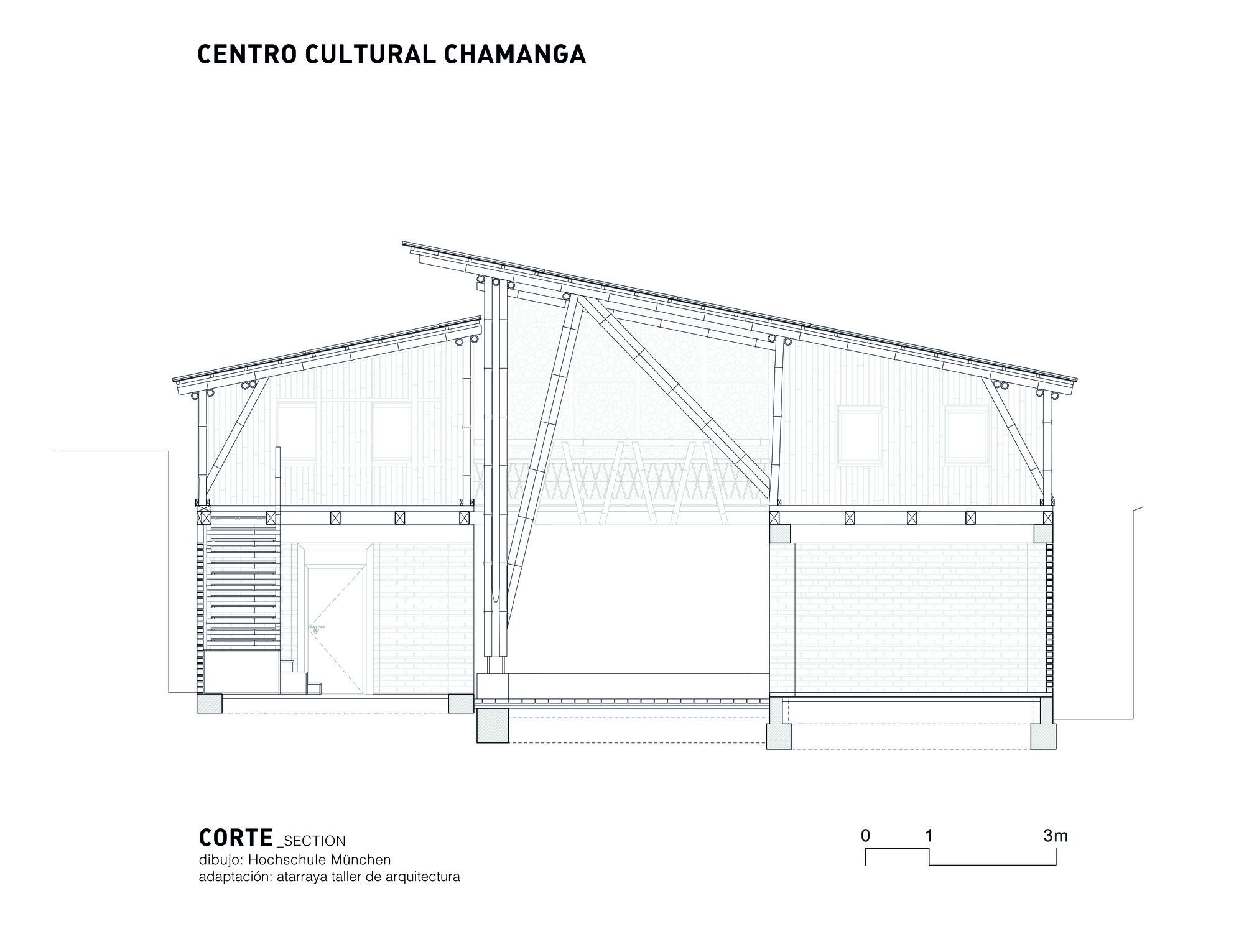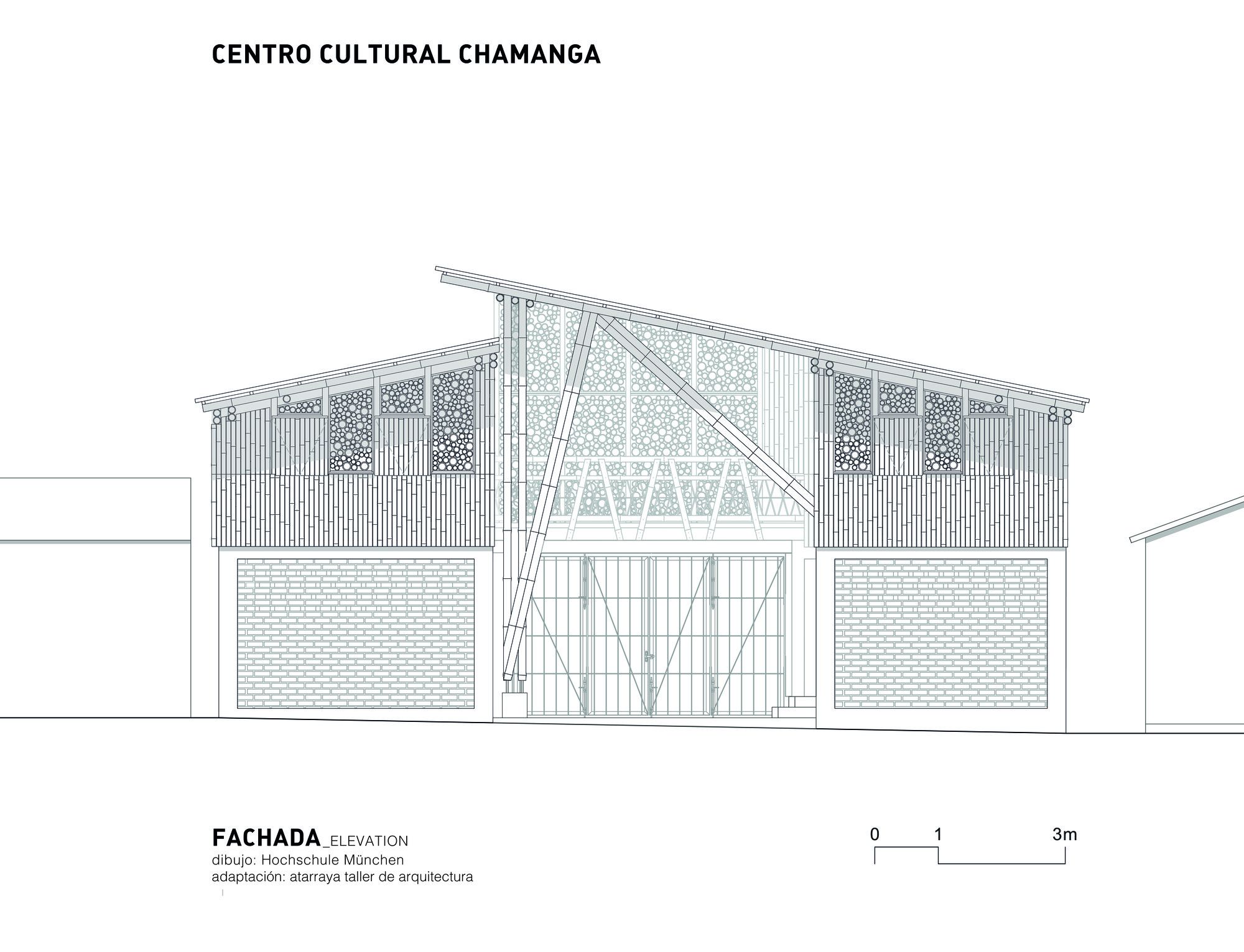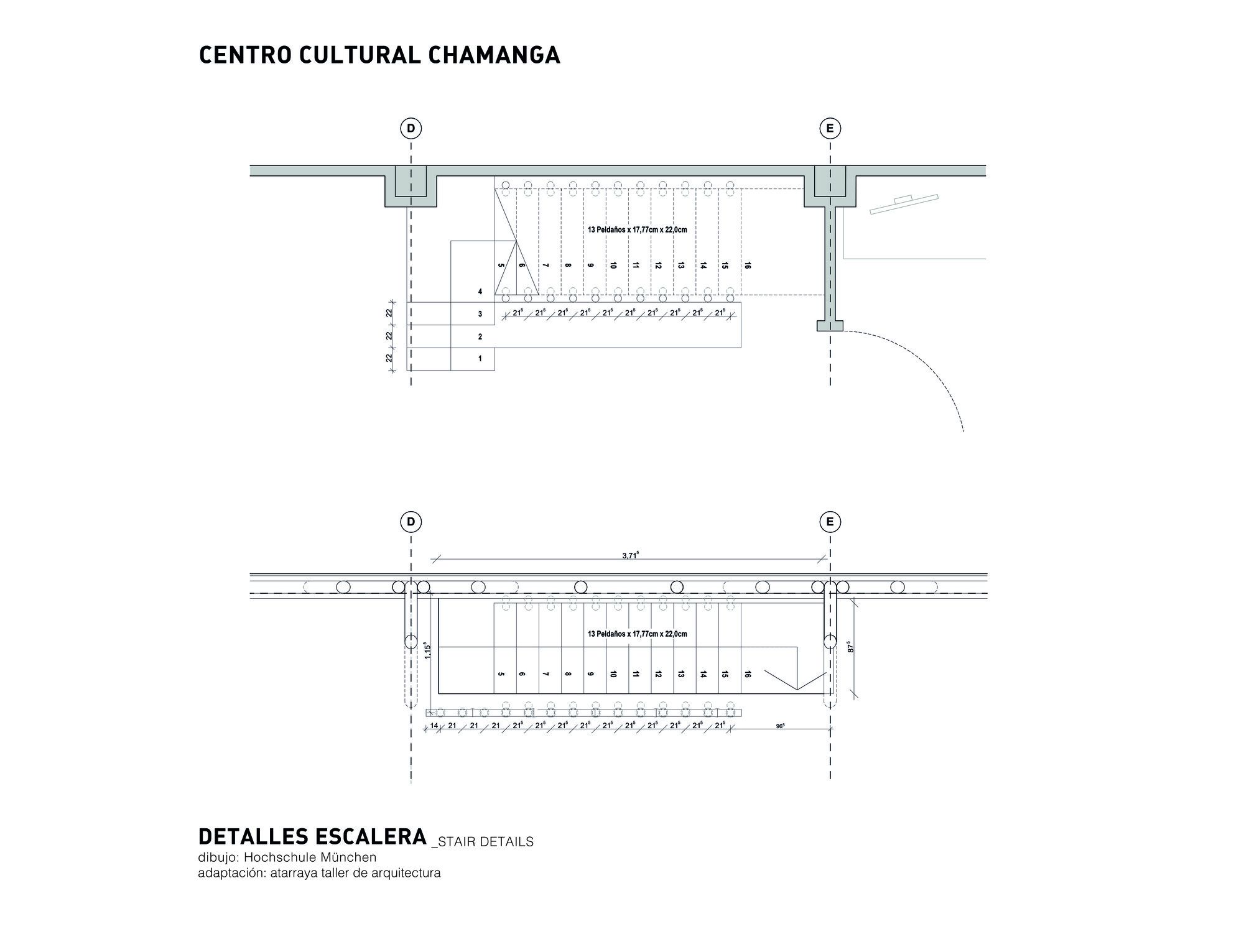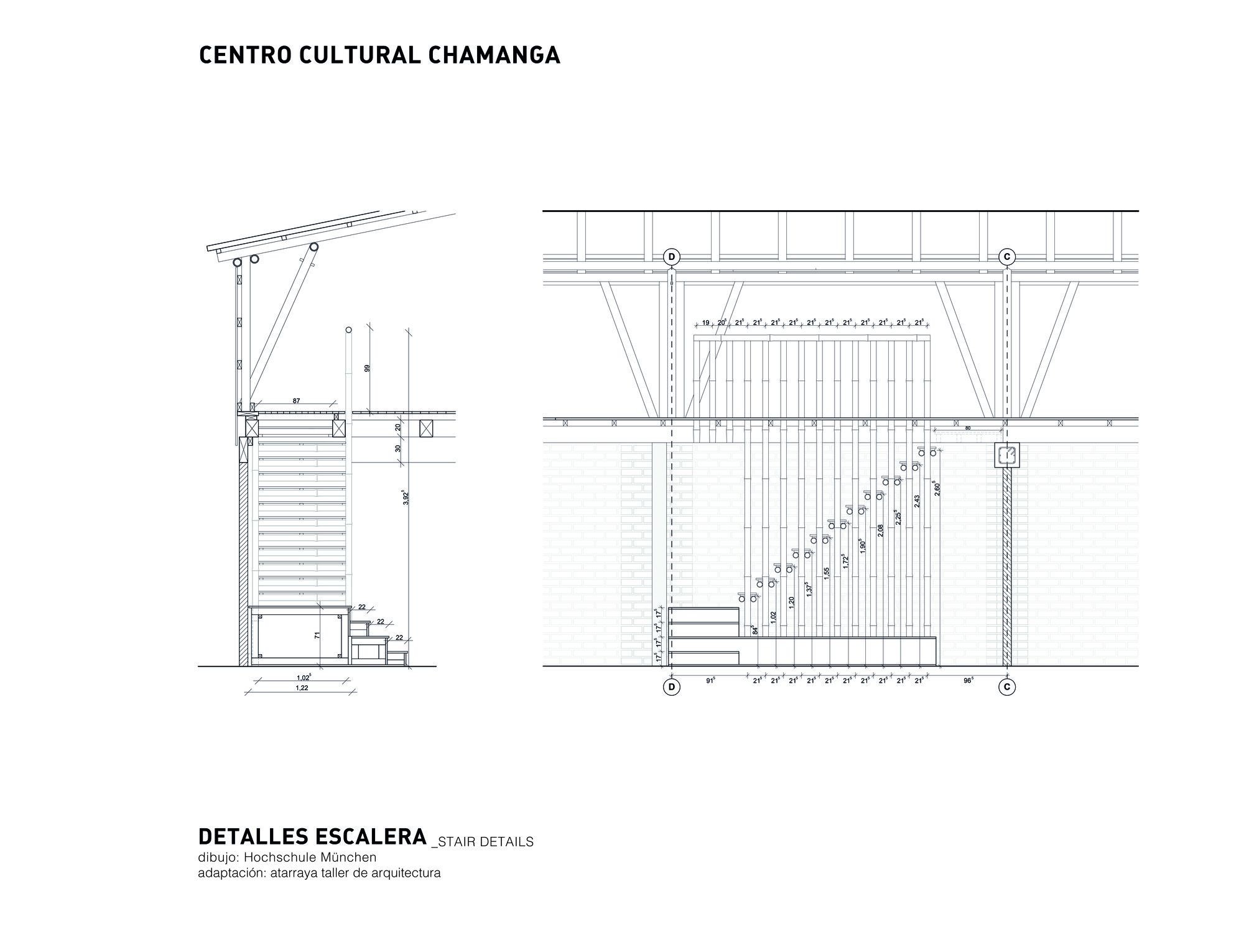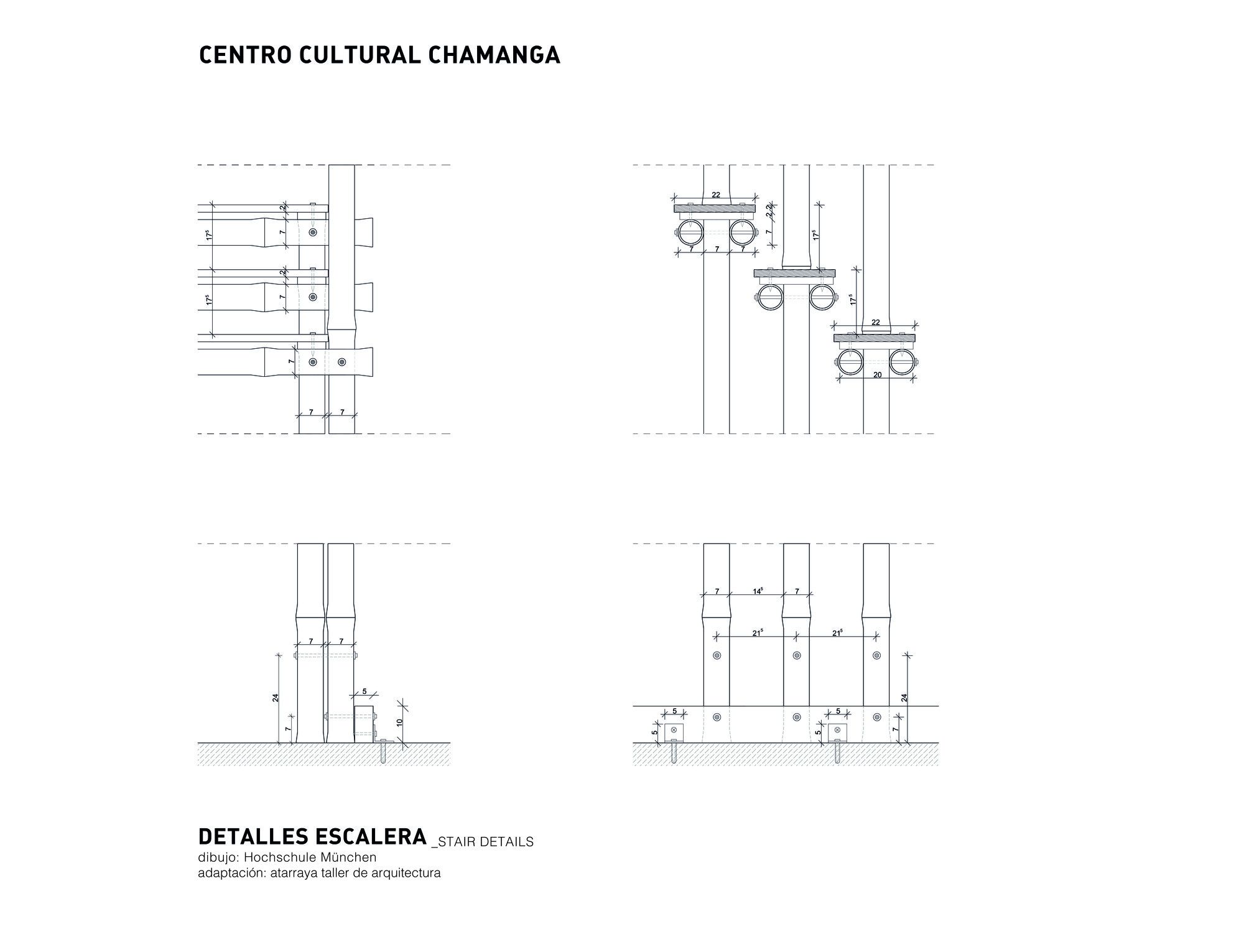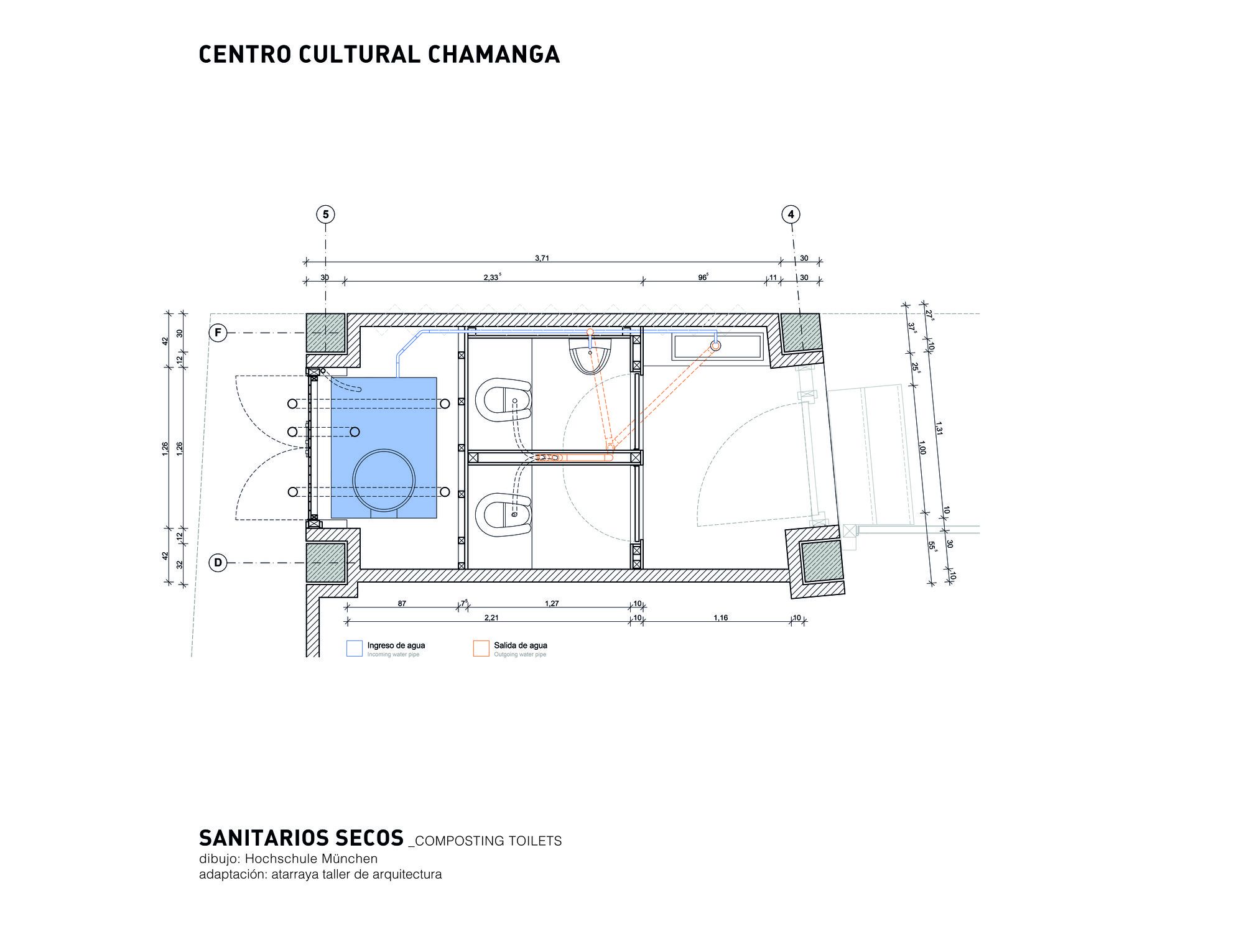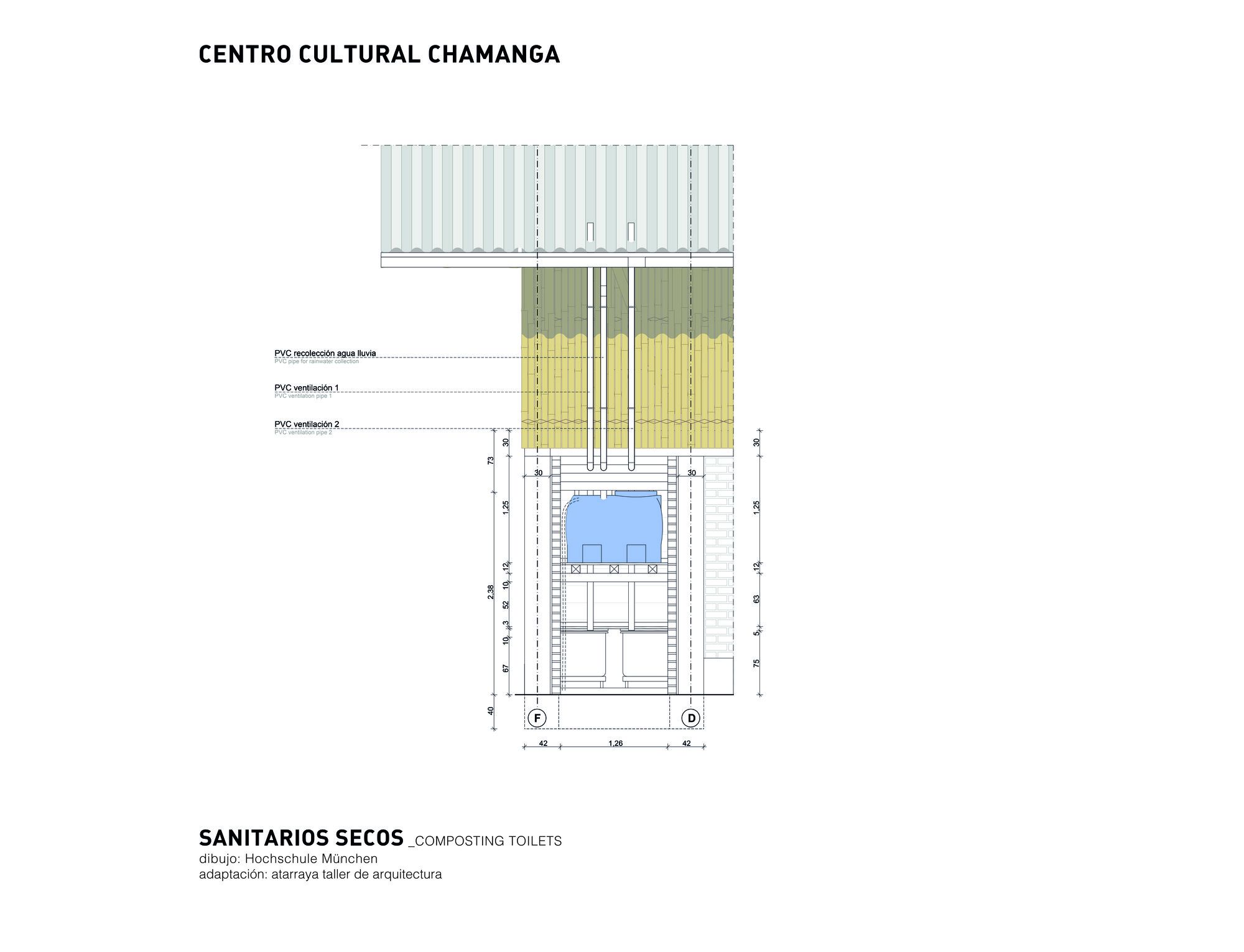Chamanga Cultural Center
CONTEXT
Chamanga is a fisherpeople town located on the Cojimíes River Estuary, in Esmeraldas, a predominantly Afro-Ecuadorian and historically underserved province in coastal Ecuador. After the April 2016 earthquake severely damaged 80% of their buildings, the majority of chamangueñxs migrated farther inland. The disaster not only threw Chamanga in a situation of social and physical transition, but also deepened the historical inequalities that have put 100% of Chamanga’s population below the poverty line.
Since 2009, local organization Opción Más runs cultural programs for children and youth, focused on strengthening Afro-Ecuadorian and Montubio cultural identity and heritage in music, dance and poetry. However, the earthquake destroyed the house they ran their programs in.
The Chamanga Cultural Center is the result of a long-term collaboration between the community of Chamanga, academia and civil society organizations.
PROCESS: MINGA AND DESIGN/BUILD
The project was organized in two phases within a design/build framework, where students design, plan and build in collaboration with local community, professionals and professors.
The leadership of local maestros and maestras throughout the process provided opportunities for the exchange of knowledge, integrating the local tradition of social reciprocal construction –the minga– with the academic methodology of design/build. This was crucial to ensure that the building was appropriate(d) and relevant, as well as to strengthen the social organizing process that the construction was a part of.
Portland State University took part in the design and construction of phase I, whereas the Munich University of Applied Sciences spearheaded the second phase. Throughout the process, Atarraya Taller de Arquitectura and Opción Más, alongside other chamangueñx stakeholders, led processes of on-site research, participatory decision-making and implementation.
DESIGN
Located in a 9x15m interior lot, the project is organized in two parallel bars surrounding a double-height atrium. During presentations and events with larger attendance, the atrium opens up to the street, integrating the building with public space.
The center anchors itself to its context by taking cues from local vernacular architecture. At the same time, it stands out by means of its scale and reinterpreted use of traditional building systems. The first floor, built in brick and reinforced concrete, responds to the community’s concerns regarding security, while simultaneously protecting natural materials from water and insects. The second floor is framed in local Guadua bamboo and wood. Clad in Guadua mats and latticework, the space is comfortably day lit and ventilated.
Recycled Tetrapak sheets make up the roofing, resulting in improved acoustic and thermal conditions inside the Center. Rainwater is harvested in tanks and provides users with access to running water, whereas the dry-toilet system provides an alternative for Chamanga’s sanitation crisis, still neglected by public water and sewage systems.
TODAY
Opción Más and different local collectives use the Cultural Center for activities including workshops on community film-making, marimba and mangrove-ecosystem preservation, art courses, and neighborhood assemblies. The Cultural Center provides a place for community-run skill-building and technical training, while helping local organizations re-establish the community’s cultural ties to their history and the estuary.
Project Info:
Architects: Atarraya Taller de Arquitectura, DesignBuild Studio, Munich University of Applied Sciences, Opción Más, Portland State University
Location: San Jose De Chamanga, Ecuador
Area: 1937 ft²
Project Year: 2018
Photographs: Santiago Oviedo
Photography by © Santiago Oviedo
Photography by © Santiago Oviedo
Photography by © Santiago Oviedo
Photography by © Santiago Oviedo
Photography by © Santiago Oviedo
Photography by © Santiago Oviedo
Photography by © Santiago Oviedo
Photography by © Santiago Oviedo
Photography by © Santiago Oviedo
Photography by © Santiago Oviedo
Photography by © Santiago Oviedo
Implantation
Process diagram
Plan - Ground floor
Plan - 1st floor
Section
Facade
Stairs details 01
Stairs details 02
Stairs details 03
Bathrooms detail 01
Bathrooms detail 02
Bathrooms detail 03


